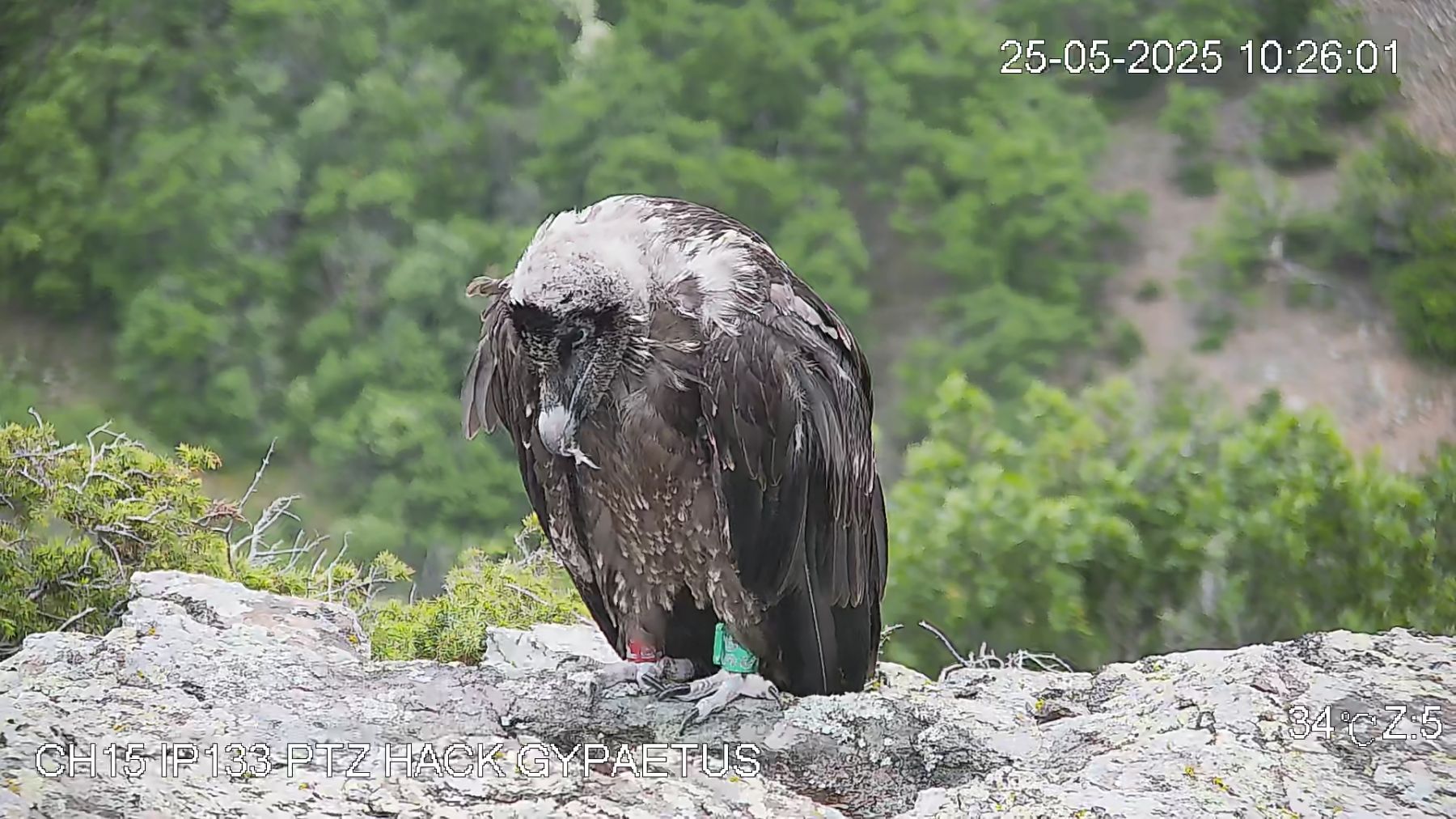In a landmark achievement for vulture conservation, Bulgaria set a new breeding record in 2024 with Cinereous Vulture (Aegypius monachus) chicks raised in the wild, marking significant progress in ongoing efforts to restore this critically endangered species that returned to the country from extinction.

Record-breaking breeding season
This year, Bulgaria saw a record seven Cinereous Vulture chicks hatch in the wild, the highest number since the reintroduction programme began. However, there were challenges: two chicks were lost—one to a severe hailstorm shortly after hatching and another due to a fall from its nest at two months old. Despite treatment at the Rescue Center in Stara Zagora, it did not survive.
Despite these setbacks, the survival of five chicks is a remarkable achievement. Each of these surviving chicks was fitted with a GPS transmitter while still in their nests, ensuring they can be monitored as they continue to grow and eventually take flight.
Progress since the first hatchling
The success of the 2024 breeding season builds on steady progress over the past few years. The first Cinereous Vulture chick hatched and fledged in 2021 in the Kotel Mountains that marked the return of the Cinereous Vulture as a breeding species in Bulgaria.The comeback continued with a second chick hatching in 2022 in Ponor and three more chicks successfully fledging in 2023—two from the Kotel Mountains and one from Ponor. These early successes laid the groundwork for this year’s record-breaking season.
Parent vultures: A testament to reintroduction efforts
The parent vultures of these chicks were released in the Balkan Mountains as part of the reintroduction programme “Vultures back to LIFE” . Over time, these birds reached sexual maturity, formed pairs, and began nesting. In 2024, a record 20 pairs were established. While not all pairs succeeded in laying eggs or producing viable offspring, the formation of such a significant number of pairs highlights the success of the reintroduction efforts.
Two of the vulture pairs have demonstrated remarkable consistency, successfully raising chicks for several consecutive years. However, the process is not without its challenges, as seen in the loss of two chicks this year. These incidents underscore the difficulties these vultures face in the wild, from natural elements to other unforeseen dangers.
Meet the five chicks
The five surviving chicks have been named to honour individuals and places significant to Bulgarian conservation:
Lupi – Named after photographer and conservationist Lyubomir Andreev.

- Dobralin – Named after a peak in the Vrachanski Balkan.

Enev – Named after Miroslav Enev, an alpinist who contributed to building successful Black Vulture nests in Bulgaria.

Cherepish – Named after a location in the Iskar Gorge, where the last known Black Vulture nest in the area was documented in the 20th century.

Dobrudzhanka – Named after her mother, Dobrudzha.

Dobrudzhanka’s story is particularly intriguing. Her mother, Dobrudzha, was briefly away in the Eastern Rhodopes before returning just days before laying her egg. Although the male vulture, Balkan, has been a dedicated partner and father, it remains unclear if he is Dobrudzhanka’s biological father. Nevertheless, his role in raising the chick highlights the strong parental bonds that have formed within these reintroduced vulture pairs.
Cinereous Vultures comeback in Bulgaria
The successful raising of these five Cinereous Vulture chicks represents a significant step forward in the efforts to restore this species in Bulgaria, after it disappeared in 1985. The “Bearded Vulture LIFE” project continues to make strides, continuing to release birds and mitigate threats, with each breeding season bringing new hope for the species’ long-term survival in the region. We look forward to observing as these young vultures grow and hope that they eventually contribute to the next generation of Cinereous Vultures soaring over the Balkan Mountains.
The Bearded Vulture LIFE Project

The “Bearded Vulture LIFE” project is a comprehensive initiative, aiming to restore the Bearded Vulture and Cinereous Vulture across Bulgaria and the Balkans. With a budget of €5.17 million, co-funded by the European Union’s LIFE Programme, the project commenced in August 2023 and is expected to continue until 2030. Building upon the achievements of its predecessor, “Vultures Back to Life,” it is coordinated by Green Balkans, with five more partner organizations within Bulgaria, including the Fund for Wild Flora and Fauna, Foundation EkoObshtnost, EVN – Elektropradelenie Yug EAD, Severozapadno Darzhavno Predpriyatie – Vratsa, and “Sinite kamani” Nature Park Directorate. Furthermore, the project benefits from international collaboration, including the Vulture Conservation Foundation (VCF), responsible for the translocation and safeguarding of captive-bred birds secured for release. Additionally, the partner Milvus group is responsible for executing conservation efforts in Romania.




